Good morning, good evening, everyone!
Didn't you ever wonder how the MP3 came about? Who's the person behind this invention? And how has it drastically transformed the music industry as it existed before this event?
Perhaps you think that this creation came from the brilliant brains of Silicon Valley, or those of Hollywood, or maybe even Japan (all of which are the birthplaces of audio and digital technologies, among others)? Well, you've got it all wrong, this story begins in a small town in Bavaria, Germany, in Erlangen precisely.
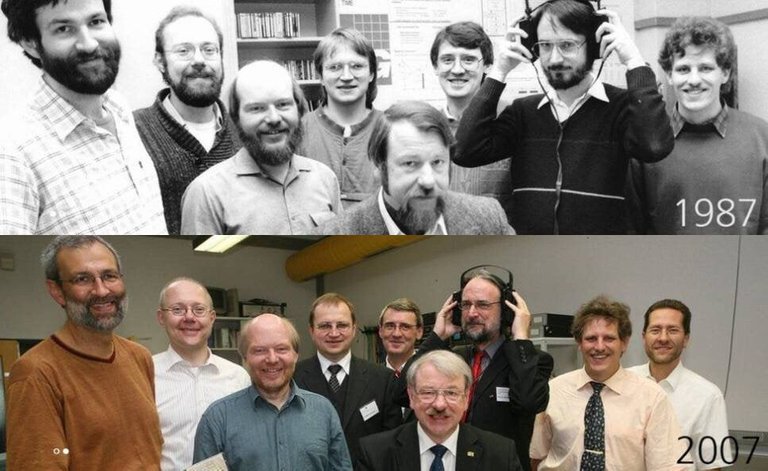
It all began in 1982, with Karlheinz BRANDENBURG, 28, a PhD student. His Thesis supervisor, Dieter SEITZER (a pioneer in 'psychoacoustics'), wanted to patent a data transfer system, so he asked his student for help, submitting this question on a piece of paper: "What sound quality can be achieved on a conventional telephone line? ». K. BRANDENBURG's answer was "Music over the phone? Impossible". But as requested by his thesis supervisor, he continued to work on the idea, and soon he was convinced: "Either I will find a new standard, or I will work on a thesis that will end up on a shelf at the end of a corridor", and started working on an algorithm that allows us to adjust the level of precision of the sound according to what the ear really hears: for example, when loud sounds cover weaker ones, it is not necessary to process certain frequencies, so we can limit the data used.
It was in 1986 that things started to speed up, with the arrival of better computers, more powerful computers, more memory and the evolution of technology, to do its first tests.
At the same time, Philips and Sony had almost complete control over the music market, triumphed with the Walkman audio cassette player, and developed/marketed the Compact Disc in the 1980s.
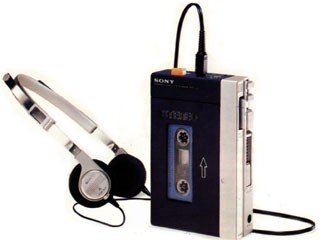
In 1988, after the International Organization for Standardization (ISO) requested audio coding standards, MPEG: Moving Pictures Experts Group, an international collaboration of a team of engineers, was founded. One of the things that interested these encoders, for the first time, was the phenomenon called 'Auditory Masking', and it was also at this time that the principle of musical compression was discussed.
After months of work and tests, but also many failures (the first machine built, was the size of a refrigerator, and was called "The Helicopter" it could reduce an audio file to only 8%), here is what came out of the music compression:
- Encoding causes irreparable loss of the original sound, but the quality of the output should not be significantly altered.
- The idea was to compress, but without compromising the hearing experience...
- And massively reduce the quantity of data needed to represent the original audio recording (for the little technical info, a "young ear" perceives a spectrum between 20 Hz and 20 kHz, so it is useless to transmit anything above this limit frequency. The ear is specially formed to have an understanding of the human voice).
"A sound is an acoustic wave with a lot of information, of which only a tiny part is perceived. The art of compression is to analyze sounds and keep only those components that are audible. The rest must be discarded."
Same year K. BRANDENBURG listens to Suzanne Vega's "Tom's Diner" music (which at the time was mainly used to test the speakers, using Suzanne's a-cappella), and thinks "My new algorithm will have to be really, really good at choosing which parts of the sound could be rejected without ruining the listening experience".
The first tests were catastrophic, the melody sounded good, but Suzanne Vega's voice was destroyed, giving them an idea of the progress still to be made. After hundreds of listenings of "Tom's Diner", K. BRANDENBURG finally succeeded in perfecting the music compression system, while remaining faithful to the artist's voice itself. Even with a compression ration of 1:12
And it was finally in 1992 that the ISO finally included it as one of the many audio encoding possibilities, under the official name of MP3 → MPEG-1/2 Audio Layer III
And the patent was registered under the name of the foundation where the work was performed, the FRAUNHOFER Institute, which is non-profit organization, so all the profits have to be reinvested, which is why nobody has ever been able to benefit financially from this revolutionary technology.
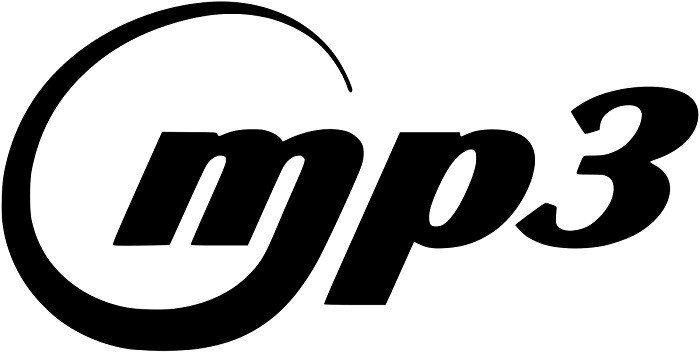
The Technology was up and running and in place, but the large consumer electronics companies thought Layer II was still a good compromise, with only a few customers wanting to use Layer III. In 1994, another meeting of MPEG experts was held to discuss what to do with this technology. One of the members submitted the idea "Letting MPEG Layer III (MP3) become the audio standard on Internet".
On July 14, 1995, after having really identified the Internet as a large application area of Layer III, the file extension ".MP3" for encoding and decoding appears.
In the same year, the price of computers fell, they became more and more popular, more and more intended for home use, memories increased (hard disks with 1 GB of storage), software always more powerful, as far as Internet is concerned, the bandwidth is still low, but still largely sufficient for sending MP3s, with our 28 kb/s modems, even 56 kb/s for the most powerful.
At the end of the 90s, MP3 was technically the best system on the market, and accessible to everyone. It was the first technical standard, and still today, the only format that can be played on all devices.

As the popularity of the Web continued to grow, MP3 also gained ground with the advent of MP3 players and shareware encoding software. K. BRANDENBURG alerted the recording industry to the future of dematerialized music distribution, and wanted to offer them the opportunity to use this new technology as a complementary format to traditional distribution suppoorts, but nobody wanted to listen to it, some even laughed at it. The Majors' vision was obscured by the astronomical profits made from disc sales at the time, and judged that MP3 would be a technology with no future.
The entire industry took too long to react, suffering the full force of this radical change in the global music landscape - The Majors are no longer the sole suppliers of melody - Pandora's Box is open.
That same year, it was a turning point for MP3, as soon as the software to convert files to MP3 (until then very expensive and intended for professional use) was cracked and spread on internet by a hacker named 'SoloH'.
This technology is quickly hijacked, and thus disrupts the consumption, distribution and storage of music - and this was the beginning of the biggest internet wars (intellectual property infringement, copyright infringement, no control, free distribution ...).
May 1997, Michael Kramer, a young 19-year-old American, is at home surfing on Internet while all his friends are at the Prom at his University of Wisconsin. At the time there was still no online music store. He came up with the idea of gathering and listing a few page addresses offering the possibility of downloading MP3s, with the intention of sharing them with as many people as possible. He put online his rudimentary site "Blex's Page of good mp3" (Blex is his pseudonym on internet), which quickly became a real directory of audio files - maybe even the trigger of this war against the piracy of the works of musical artists (The site was discovered pure coincidence by the technical director of Greffen Records, music label from Aerosmith, Guns N'Roses, Nirvana at the time).
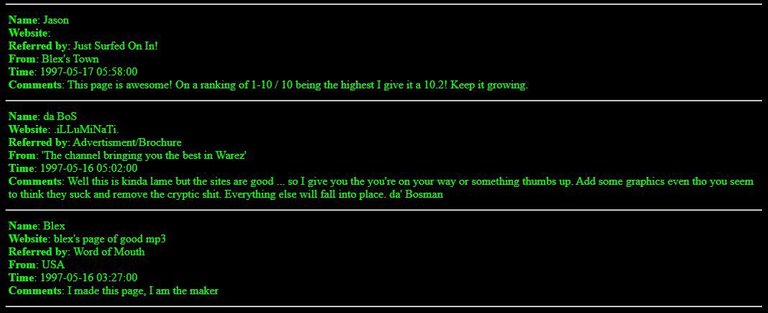
In December 1997, the notoriety of the MP3 format became such that 2 Americans, Michael Robertson, & Greg Flores launched the site "mp3.com" to host songs by independent musicians.
Gone are the era of Discs and CD Players, there is no longer the need to buy an album (which could only contain 74 minutes of music maximum), if we just want to listen to some music, and the possibility to store several hours of music on our personal computer.
In 1998 K. BRANDENBURG "The Doctor of Sound Compression" receives the Silver Medal Award (given in recognition of outstanding development or achievement in the field of audio engineering).
In June 1999, the entire music industry was hit by the tidal wave of MP3 piracy with the arrival of Napster, created by Shawn Fanning, Jordan Ritter & Sean Parker, and the creation of peer-to-peer sharing. At Napster's peak, billions of MP3s would pass through this platform (in November 2000 alone, nearly 1.76 billion songs would have been downloaded), until its closure in July 2001. It has never been so easy to get free music, compressed in MP3, for free
In 2000 K. BRANDENBURG, attending a meeting of the Secure Digital Music Initiative (SDMI), said, "Look, you need to establish a technical standard that ensures that every service selling music and every device works together and has a universal system. If you don't, I see a clear winner, and it's MP3 without any protection, without any digital rights management. It's not our problem if that happens, and it has happened." … "The only real way to fight against "free" music was to make paying for music as simple and painless as possible" (an idea that Steve Jobs also later had)... "Look, whatever you do, the most important thing is ease of use, the second thing is ease of use, the third thing is ease of use" → Changing the mindset, paving the way for 'pay streaming'.
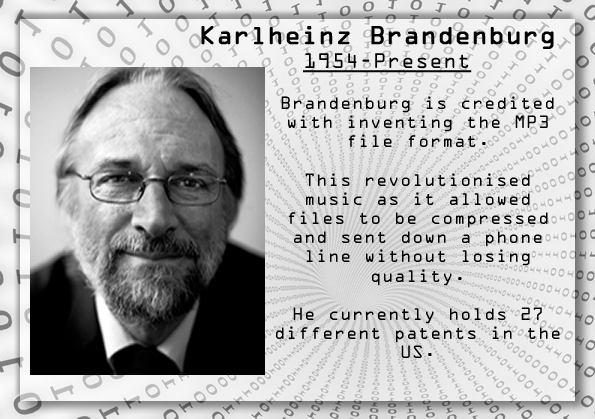
Source : ICT Teacher
2017, End of the history of the Patents held by the FRAUNHOFER Institute, the MP3 becomes henceforth free of rights (end of intellectual property)
Today, still a long way to go, MP3 is still deeply rooted in our daily music usage (even if there are other formats that avoid piracy, or secure music).
Today acceptable quality is obtained from 128 kbit/s: considered good quality, 256 kbit/s: very good quality, and 320 kbit/s: excellent quality!
Would you like to test the quality of the audio format yourself? I invite you to test it on the most competitive streaming platform on the market, FLAT.FM, you can have access to thousands of hours of music, at 128 kbits/s quality, for free and unlimited! No other platform on the Internet proposes you such an offer, and for those who want to higher up the range, you can go premium, the subscription costs only $1.22 monthly! Cheaper than a coffee, to have access to the entire catalogue in "exceptional quality 320 kbits/s".
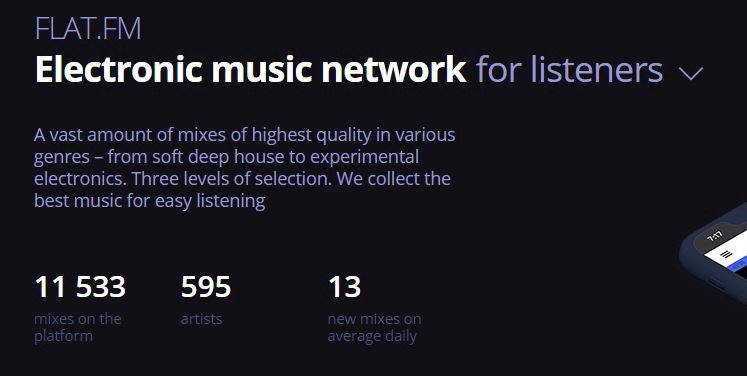
Enjoy MP3, this technology, this audio format has marked history, and will continue to make history for many years to come, and has also changed the face of the music industry profoundly.
More About Karlheinz Brandenburg's awards Wikipedia & Hall of Fame Innovator

See you Soon
Christophe WILHELM
Resources